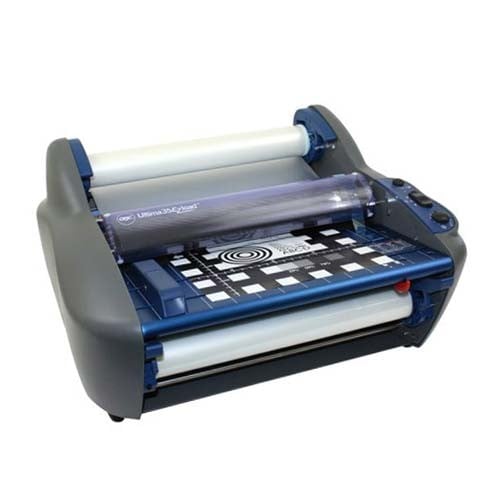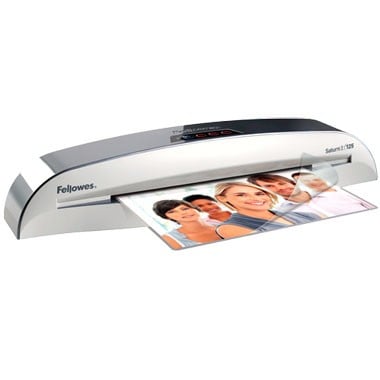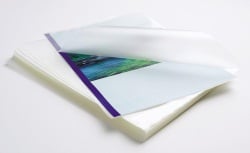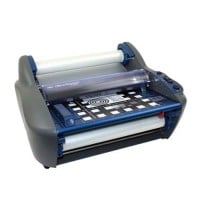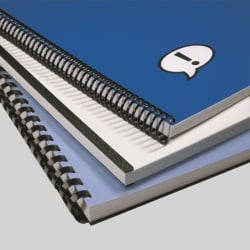MyBinding Knowledge Base
- Binding (248 Article)
- General Binding (42)
- Plastic Comb Binding (57)
- Fastback Binding (59)
- Perfect Binding (2)
- Modular Punching (8)
- Zipbind (3)
- Twin Loop Wire (13)
- Coil Binding (22)
- Thermal Binding (14)
- Strip Binding (1)
- VeloBind (4)
- Binding Covers (14)
- Proclick Binding (10)
- SureBind (4)
- Screw Post (2)
- Hole Punches (2)
- Staplers (4)
- Komtrak Insprial Binding (2)
- Paper (1)
- Rhin-O-Tuff (5)
- Binding Machines Comparison (17)
- Laminating (109 Article)
- General Laminating (26)
- Roll Lamination (16)
- Pouch Lamination (36)
- Pouch Board Laminator (3)
- School Laminator (3)
- Foil Laminating (3)
- Royal Sovereign Laminators (10)
- Laminators Comparison (3)
- Boards (11 Article)
- Bulletin Boards (3)
- Whiteboards (5)
- Chalkboards (1)
- Paper Shredders (44 Article)
- General Shredding (35)
- Industrial Shredders (1)
- Cross-Cut Shredders (2)
- Cardboard Shredders (1)
- Multimedia Shredders (1)
- Personal Shredders (1)
- High Security Shredders (2)
- Ring Binders (9 Article)
- Specialty Binders (2)
- Reinforced Paper (1)
- Health Care Punched Paper (1)
- Perforated Paper (2)
- View Binders (1)
- Index Tabs (9 Article)
- Index Tab Dividers (2)
- Copier Tabs (4)
- Pocket Folders (1)
- Custom Index Tabs (1)
- Pre-Printed Index Tabs (1)
- Paper Handling (37 Article)
- Paper Folders (9)
- Paper Joggers (2)
- Guillotine Cutters (4)
- Rotary Trimmer (3)
- Electronic Paper Cutters (1)
- Corner Rounders (2)
- Paper Scoring (2)
- Paper Drill (2)
- Booklet Makers (3)
- Stack Cutters (1)
- Paper Handling Equipment Comparison (5)
- ID Accessories (12 Article)
- Badge Holder (1)
- Lanyards (8)
- Badge Reels (1)
receive
$5off
*On order $25 or more.
What is Perfect Binding?
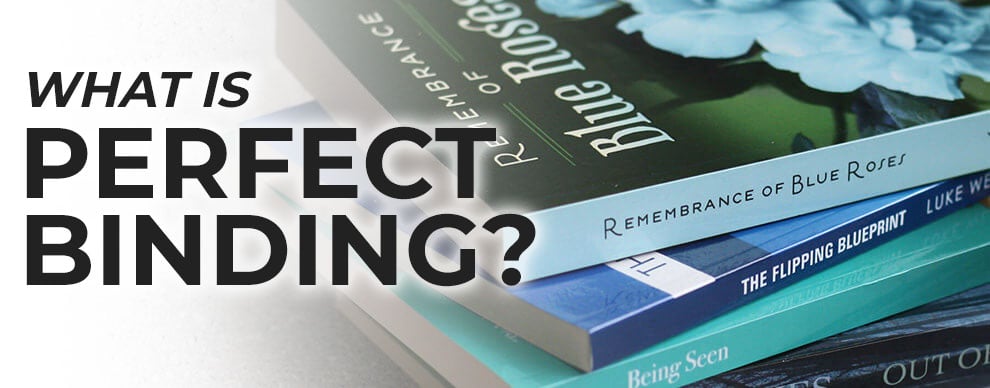
In this article we will discuss:
• What does perfect binding look like?
• How does perfect binding work?
• Other names for perfect binding
• Benefits of perfect binding
• Cons of perfect binding
• Who uses perfect binding
• Top perfect binding brands
• Perfect binding machine comparison
• Perfect binding videos
What Does Perfect Binding Look Like?
You have used a "perfect" bound book if you’ve ever picked up a commercial paperback. Ironically, the term “perfect” doesn’t really have anything to do with the binding at all. Perfect binding refers to the flat binding of a page's numerous folds using a strong, yet flexible, thermal glue. The pages are all consistently trimmed to size once they have been glued. This three-sided uniform cut results in an exceptionally well-organized, "perfect" set of edges that’s not usually present in hardcover books. Books with perfect binding have a professional appearance, stack easily, and look wonderful on shelves or displays.
Because of its polished appearance and affordable price, businesses and organizations, writers, and publishing companies use the perfect binding process on a variety of printing projects.
How Does Perfect Binding Work?
Perfect binding, often referred to as soft cover novel binding, is a method of binding in which the interior pages of a book are clamped and glued at the spine before wrapping it in a soft cover. After that, the cover and pages are cut on the sides opposite the spine to create a book with a crisp, "perfect" edge.
Although the industrial design of a perfect bound book varies depending on the machinery the fundamental steps in a perfect binding system are similar. Let’s look at the steps in detail.
A book block is made by arranging the inner pages of a book after they have been printed and folded into signatures. The book block is then carried spine-side down through the binder. The clamp moves the book block across a knife, which grinds the spine and removes the folds. Brushes or sandpaper are used to grind, notch, and roughen the spine. This exposes the paper fibers and raises the spine's surface area, which helps the side adhesive stick more securely.
The book block is brought through the glue station while it is still spine-side down. Polyurethane reactive, or PUR glue, is a kind of hot-melt adhesive that is frequently used for the spine glue in perfect binders. PUR glue from hot glue pots is applied to the book's spine using applicator wheels.
As a mix of hot-melt glue with different volumes is used for perfect binding, side glue is applied after the spine glue. For the side of the spine that will be glued to the cover, a separate hot-melt adhesive is applied after the PUR glue that was used for the spine. When heated, a mixture of resins and polymers bonds and, when cooled, solidifies to form hot melts. During the bonding procedure, a metering roller is utilized to remove extra glue and make sure the adhesive completely and evenly covers the backbone.
The inside spine of the book block is scored after the glue has been applied, allowing the cover to fold neatly around the book block.
The track containing the notched cover lifts to meet the spine of the clamped book block following the application of hot-melt adhesive. The cover is pressed into the spine of the book block while the front, back, and sides are kept firmly in place. The nipping station clamps the spine on the hinge scores and holds it so the glue fully penetrates the spine.
The book is then put on a conveyor belt and sent to the trimmer. The conveyor belt's length and speed are calculated to last the precise amount of time needed for the glue to dry sufficiently for trimming. This first dry time only lasts 45 seconds for conventional hot-melt adhesives, but the adhesive takes around eight hours to completely dry.
In a perfect binding system, the trimming unit consumes the most time, hence some binding systems deliver the excess product to a stacker for off-line trimming. The head, foot, and thumb edges of the book are cut by three big blades that are lowered into the trimmer. With the remaining folds and cover edges removed, the finished product is clean-cut and you get a perfectly bound book.
Can you believe that there are perfect binding machines that can do this 360 times an hour?
Other Names for Perfect Binding
Perfect binding is also referred to as soft cover binding and adhesive binding.
Benefits of Perfect Binding
There are several convincing benefits to perfect binding that make it worth it for many different reasons.
- Affordable
Its affordability is first and foremost a major selling point for many. In addition to being more affordable than hardcover binding techniques, perfect binding can also be used on smaller print runs, giving customers the opportunity to produce high-quality printed goods on a budget. While the initial price tag for a perfect binding system is a pretty penny but it ends up paying for itself in the long run.
- Fast
Faster than traditional sewing, soft-cover novel binding speeds up bookbinding and production times. This means that you get to spend more time on important things, like taking care of your customers or responding to emails with downtime. Even for manual binding systems, the slowest it will bind is one book every 20 seconds. If you have a higher demand, you can check out the industrial-size binders that can crank up to 360 books an hour.
- Clean and neat
Perfect-bound books stack nicely and have a professional appearance and aesthetic appeal. This is visually appealing because it allows for all the books to look the same and look neat on the shelves and on displays.
- Allows for customization
Additionally, the perfect binding technique creates a square spinal edge that makes it possible to print the book's title or other information on the spine. This is great because it allows for customization of the book’s cover without needing any additional equipment or people.
Cons of Perfect Binding
While perfect binding is used by many paperback books, it’s not perfect for everything. There are a few disadvantages to perfect binding despite all its benefits.
- The cover is thinner
First off, the covers of most perfect-bound books are more flexible and allow for bending. However, they come thinner than the hardcover options. The cover could lose its form over time due to the paper's design.
- It won’t lay flat
The main con of the perfect binding system is that it doesn’t lie flat and it’s harder to have hands-free reading. When someone tries to lay a page flat, there isn’t much give in the spine like there is with a saddle-stitched book. The adhesive on the spine may come apart after repeated readings or attempts to flatten the book.
- “Gutter” space
There’s some design space that will be “lost” and extra attention should be given to pictures placed in these softcover books. This space is located on the inner margins of the books and is sometimes referred to as the “gutter” space. End-products like recipe books, instruction manuals, and calendars are not ideal for perfect binding. The minimum thickness is .125 inches and the maximum of 2.25 inches.
Who Uses Perfect Binding?
Since perfect binding is affordable, it’s popular among print and finishing shops, small and big alike. The perfect binding machinery might be anything from inexpensive tabletop devices to large, expensive systems. The popularity of on-demand bookbinding has led to the creation of hundreds of low-cost machines that include many of the capabilities that were previously exclusive to high-production machines. Perfect binding is a wonderful way for a wide range of publications, including catalogs, paperback books, and magazines.
Top Perfect Binding Brands
Since perfect binding is affordable, it’s popular among print and finishing shops, small and big alike. The perfect binding machinery might be anything from inexpensive tabletop devices to large, expensive systems. The popularity of on-demand bookbinding has led to the creation of hundreds of low-cost machines that include many of the capabilities that were previously exclusive to high-production machines. Perfect binding is a wonderful way for a wide range of publications, including catalogs, paperback books, and magazines.
Perfect Binding Machine Comparison
Your purchase of a perfect binding machine will depend on how much you bind. If you’re a small school, church, office, or print shop the Fastback 20 would be ideal. You’re capable of perfect binding by hand. However, if you’re a large university, company, or print-on-demand company, you’ll need an industrial-sized machine.
Check out the below for some comparisons.
|
Fastback 20 |
CPB1 |
|
|
Binding capacity |
10-350 sheets or 1.5” |
2.25” |
|
Page Sizes: |
Max. 12" and Min. 6" |
13.4” x 30.75” |
|
Optimal Paper Weight |
20 lb standard (80 gsm) to 32 lb (120 gsm) |
Offset, Coated, Printed with Oil-Based Ink, Printed with Wax-Based Ink |
|
Spine Lengths |
Max. 12" (A4); Min. 6" |
Max 12.5” |
|
Spine Thickness |
Narrow, medium, wide binding strips |
|
|
Speed |
10-350 sheets in 13-20 seconds |
360 books an hour |
|
Warm-up Time: |
3 minutes |
|
|
Display |
One-touch LCD |
LCD Screen |
|
Binding methods |
Handles perfect, strip, and hardcover binding |
Fully automated binding system: clamping, nipping, and |
|
Weight |
66 lbs. |
508 lbs. |
|
Machine Dimensions |
23.5” W x 9” H x 23” D |
55” W x 20” D x 18” H |
Top Perfect Binding Brands
The Powis Parker Fastback 20 is a perfect binding device that can be used in copier shops, banks, governments, or educational settings. Whether binding presentations, yearbooks, or crucial documents, it will yield outstanding results at a very low cost. The FB20's user-friendly, one-touch LCD display makes it incredibly simple to use and almost maintenance-free. It was created with simplicity and performance in mind. The versatile machine can bind hardcover books and tape-bound books, instantly identifying the type of binding strip you are using. Additionally, the Powis Parker system is environmentally friendly, continuing the business's focus on more eco-friendly production processes and materials.
The Fastback 20 is great for binding one book at a time by hand. Anyone can use it with little training and start binding up to 350 sheets every 20 seconds.
However, if you have a higher output, the Coverbind CPB1 Tabletop Perfect Binding is a great next consideration. This tabletop printer may be used in almost any in-house print shop because it is conveniently small, extremely quick, and reasonably priced. It provides a practical and affordable method for producing softback bound volumes.
Use the CPB1 on any existing worksurface or pair it with the optional stand to raise it to the ideal working height without taking up more space on the floor. Easy setup and operation are made possible by the LCD display and basic controls. The Coverbind CPB1 perfect binder system gives the operator total control over the device and can process up to 360 books per hour.
Perfect Binding Videos
| Perfect Binding is Easy with the Fastback 20 |
Perfect Binding is More Efficient than Ever with the Coverbind CPB2SG Perfect Binder |
Perfect Binding
Do your homework to see if perfect binding is the right choice for you. Explore more of our binding machines if you'd like to continue to research.
Contact our print professionals for a consultation if you need assistance; we'll get your books or brochures off to a good start!
Ready to buy a perfect binding machine online or learn more? Shop perfect binding machines here or contact us for help.

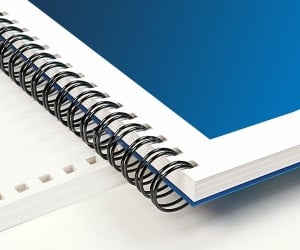
< Over the years, a number of customers have asked me whether they can use twin loop wire with their plastic comb binding machine. These customers often don’t want to have to buy a brand new machine but like the look and feel of twin loop wire binding. However, the answer to their question isn’t as simple as it seems. You see, they actually do make twin loop wire that is designed to work with the plastic comb binding hole pattern. With that said, if you want to use these wires you are going to need a way to close the wires. What is Spiral-O Wire? Let me explain a little bit more…There is a product that we carry called Spiral-O Wire. This wire has 19 loops and is designed to work with the hole pattern from a plastic comb binding machine. Spiral-O Wire is sometimes called Wire Combs or Ibico Wire and was originally designed for use with some of the older Ibico binding machines. A number of the older Ibico plastic comb binding machines also included a twin loop wire closer on the front of them to allow users to use both plastic combs and wire. This 19 loop wire was designed for this purpose. What Equipment is Needed? As the Ibico brand has been phased out by GBC and all of the older Ibico plastic binding machines have been replaced with new models, they no longer have the twin loop wire closer on the front of them. This presents a problem in trying to use these spiral-o wires since you can’t use the wires without a way to close them. One of the only options left is to purchase a Twin Loop wire closer. However, since twin loop wire closers are not incredibly cheap this option usually only appeals to users who have larger electric plastic comb binding machines. Otherwise, it is often advisable to simply buy a low end 3:1 pitch twin loop wire binding machine (the supplies are cheaper). This being said, if you have one of the older Ibico binding machines that has a wire closer included you are in luck. The Spiral-O binding supplies that we carry will work perfectly with your machine and you will be able to use both plastic combs and wire depending on your needs. These Spiral-O binding supplies are available in Black, Silver, White, Blue and Red and in sizes up to 1″ in diameter. If you aren’t sure what type of wire binding supplies that you need to work with your machine simply give us a call. Our trained sales representatives will be glad to help you find the correct supplies for use with your machine.(Read More)
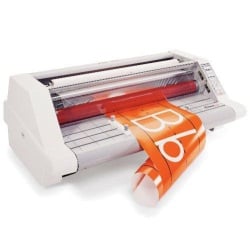

Loading...


